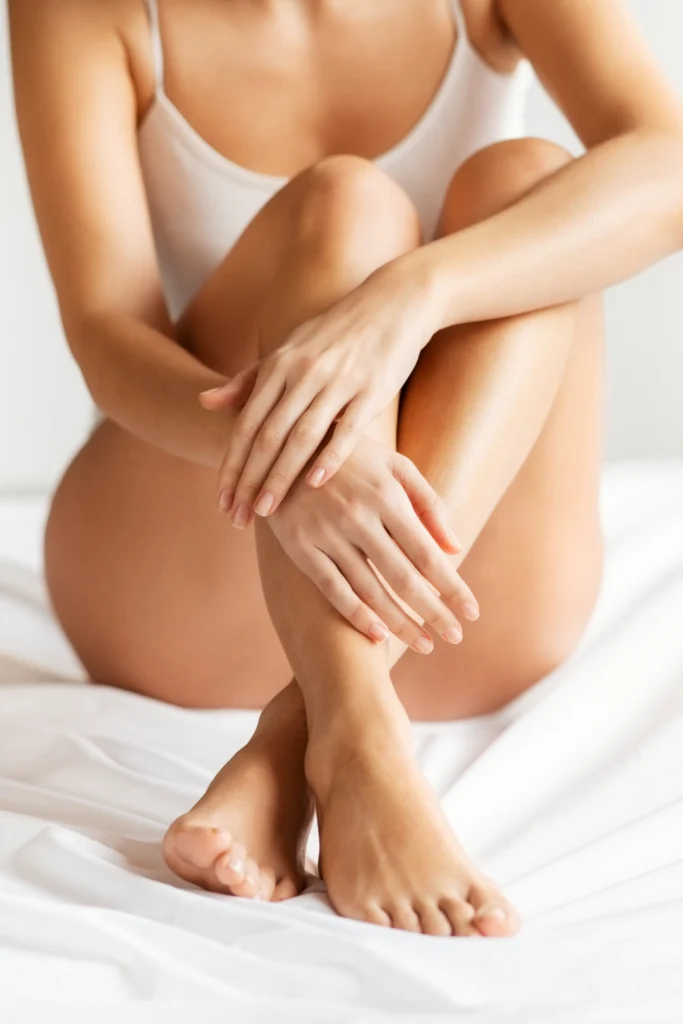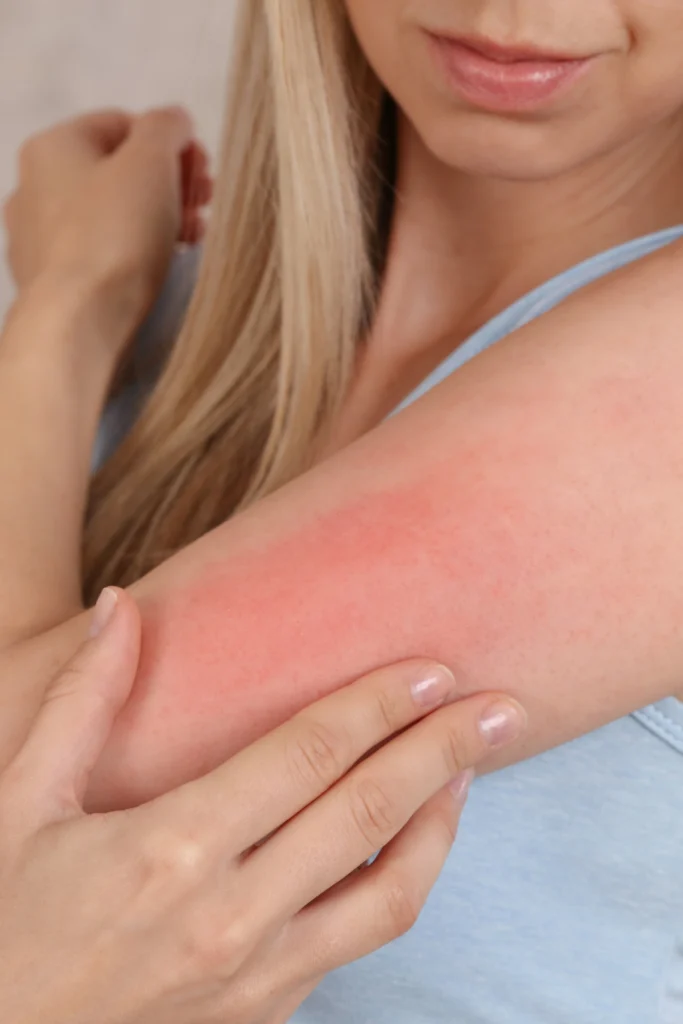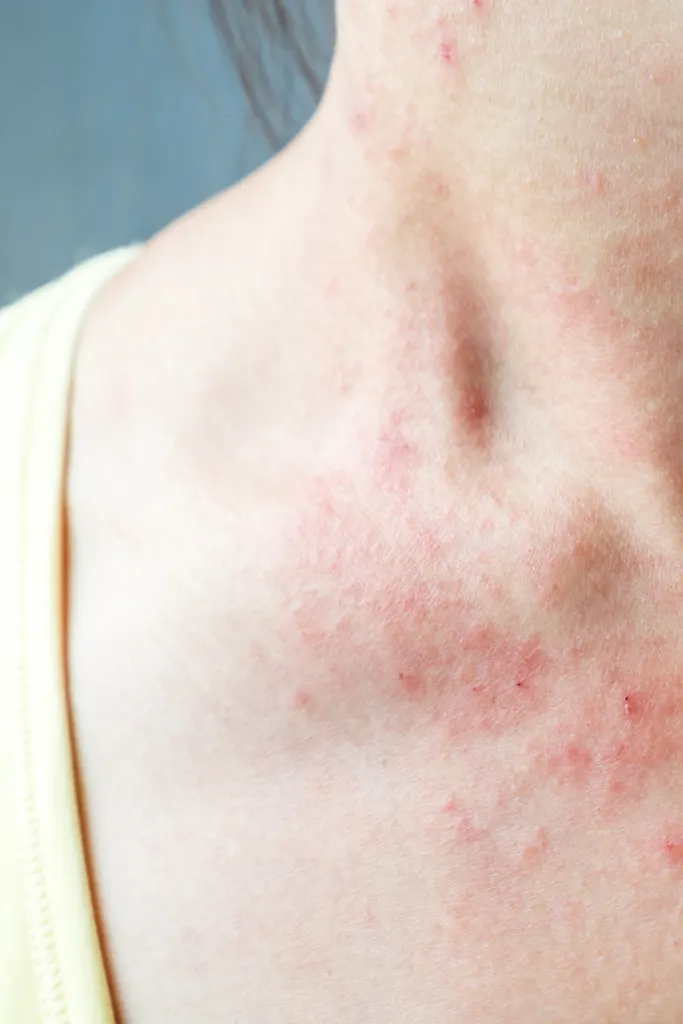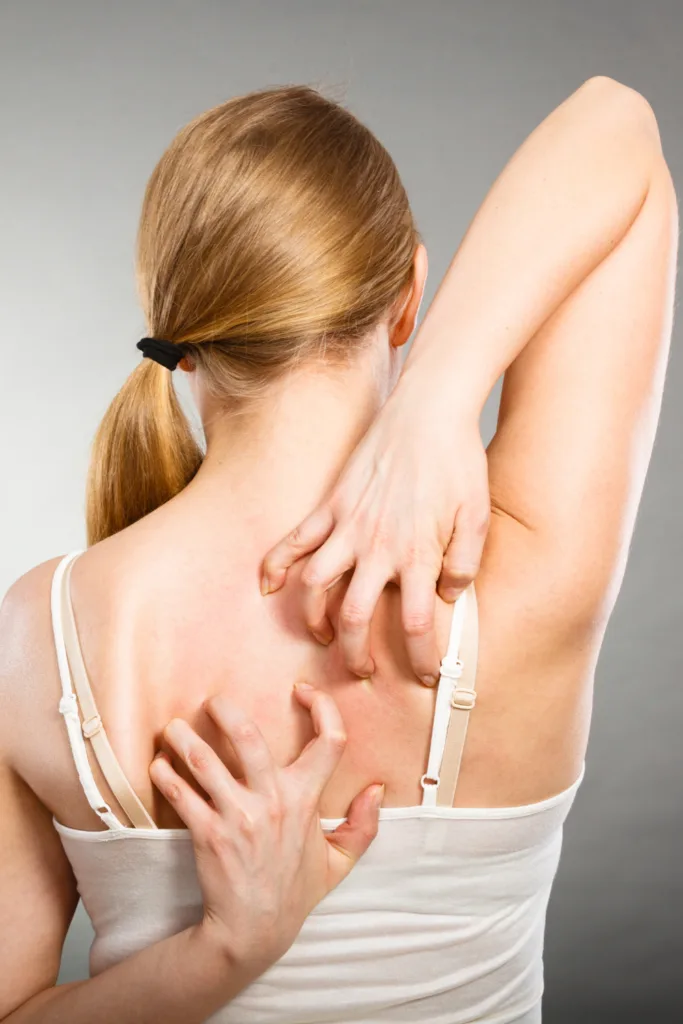“Why am I so itchy?”
If you regularly ask yourself this question during and after a run, then you may have a condition known as runner’s itch.
Runner’s itch is typically described as a sensation that occurs during and after exercise, and normally occurs in people who regularly do strenuous exercise like running.
From red bumps on your skin to itchiness on your arms and legs (and sometimes all over your body), there are many symptoms that are associated with runner’s itch.
But what exactly is runner’s itch and how can you prevent and stop it for good?
In this guide we’ll explore:
- What causes runner’s itch?
- How to treat runner’s itch
- Runner’s itch Q&A
- How to prevent runner’s itch
Ready?
Let’s get started!

What causes runner’s itch?
Some runners view runner’s itch as an allergic reaction, others view it a symptom of sensitive skin.
The truth is there are several potential causes of runner’s itch.
The main causes are:
- Running for the first time after a long break
- Running in hot weather
- Running in cold weather
- Sensitive skin
- Allergic reaction (exercise-induced anaphylaxis)
- Inflammatory response (exercise-induced vasculitis)
- Increased blood flow
- Histamine release
Running for the first time after a long break
If you’re getting back into running, or starting running for the very first time, then you’re more likely to experience runner’s itch.
When you start running, your heart starts pumping blood to your muscles in your arms and legs.
This triggers the expansion of your capillaries – these are the tiny blood vessels found throughout your body – which then causes itchy skin.
This process also stimulates the surrounding nerve endings which can also cause that familiar itchy feeling.
Running in hot weather
Not surprisingly, you sweat a lot when you run in hot weather.
This sweat can cause skin irritation, especially if you’re wearing fabrics that don’t have sweat-wicking properties.
Running in hot weather can also cause sunburn if you’re not wearing sunscreen, which can also lead to itchy and inflamed skin and skin redness.
Running in cold weather
Running in dry, cold weather can cause dry skin, which is a major contributing factor runner’s itch.
Dry skin is often the culprit when it comes to itchy skin, which can get worse if you wear tight fitting running gear like compression leggings or compression socks.
Related: Jogger’s nipple: What is it and how to avoid it

Sensitive skin
If you have sensitive skin then you may be more prone to runner’s itch.
Perfume, laundry detergent, fabrics and fabric softeners are common causes of itchy skin, especially if you come into contact with a new substance or material.
When you run you sweat which can also make the itchiness worse.
Allergic reaction (exercise-induced anaphylaxis)
Exercise can trigger a range of allergic reactions in the body – one of these being exercise-induced anaphylaxis or urticaria.
During an allergic reaction you may experience itchiness along with hives and redness of the skin.
According to a study in which they surveyed people with exercise-induced anaphylaxis, 199 people (almost 50% of the total number of people surveyed) had a history of eczema, asthma or allergic symptoms to airborne allergens.
The key takeaway? If you already have eczema or suffer with asthma or allergic symptoms, you’re more likely to develop runner’s itch.
Inflammatory response (exercise-induced vasculitis)
If you exercise during the summer months or during hot weather, this can trigger an inflammatory response in the body – also known as exercise-induced vasculitis, or golfer’s vasculitis.
This response normally occurs with prolonged standing, walking or running and induces a process whereby damage is caused to the small blood vessels in the thighs and legs.
The symptoms of exercise-induced vasculitis are as follows:
- Red and purple spots
- Lesions and redness of the skin
- Swelling on the thighs and lower legs
- An itchy rash
- An itching, stinging or burning sensation
- Pain
It is thought your genetics make you more prone to exercise-induced vasculitis.
In addition, people who undertake activities such as long distance running, hiking, golf and swimming are also more likely to get it.
Increased blood flow
When you run, your heart rate increases and as a result more blood is delivered to your body and muscles.
This process causes the tiny capillaries under your skin to stimulate and expand which can lead to an itchy sensation.
This sensation is particularly acute if you are returning to exercise after a break, or if you are new to exercise.
Histamine release
Histamine is a molecule found in the body that has long been linked with allergic response.
It is present in many human tissues, including skin, the intestines, heart, lungs and nerve endings in the brain.
Recent studies have shown that exercise may promote the release of histamine in the body to prevent tiredness and fatigue instead of an allergic response.
Histamine causes your blood vessels to expand and this contributes to the itchy sensation that you may feel in your arms and legs.
Interestingly, the name ‘histamine’ comes from the Greek word for tissue (‘histos’).
Related: What is runner’s face? Causes + 10 prevention tips

How to treat runner’s itch
The good news is there are many ways to treat runner’s itch.
So if your itchy legs are driving you crazy, try one of these home remedies:
#1 Take a warm bath
A warm bath with Epsom salts or baking soda can do wonders for itchy arms and legs.
You may swear by Epsom salts to help with sore and achy legs after a run.
These salts can also help to alleviate symptoms like itchy skin and skin redness that are associated with runner’s itch.
#2 Apply hydrocortisone skin cream
Hydrocortisone cream is a steroid cream used to treat many conditions, including eczema, psoriasis, contact dermatitis, heat rash and even insect bites and stings.
Parents can also use hydrocortisone cream to treat nappy rash in babies.
It works by calming down your body’s immune response to reduce pain and inflammation.
Pharmacies are allowed to sell hydrocortisone skin cream up to a maximum 1% strength.
Anything higher than this needs to be prescribed by a doctor.
#3 Apply aloe vera gel
Aloe vera gel has many natural properties and has been used for thousands of years to treat wounds and damaged skin.
From Egyptian queens to Alexander the Great and Christoper Columbus, aloe vera has been used for a variety of medicinal purposes.
The aloe vera plant’s skin, flowers and gel are rich in antioxidants and may speed up the regeneration of damaged skin when applied topically.
More importantly, it may also help to reduce inflammation.
A 2019 study concluded that aloe vera and its compounds can be used as a complementary treatment along with current methods to improve wound healing, retain skin moisture and integrity.
#4 Use a cold compress
A cold compress can be used to provide mild relief from itchy skin and the inflammation that is normally associated with it.
The cold temperature offers a numbing effect on the skin and helps to reduce swelling.
Related: Can running make acne worse? 4 skin secrets to help prevent runner’s acne

Runner’s itch Q&A
Q: Is runner’s itch serious?
A: In the majority of cases, runner’s itch is not serious and normally calms down in a matter of days with the right treatment.
If you have runner’s itch and also experience symptoms like dizziness, lightheadedness, heavy breathing and hives, then talk with your medical professional.
Your doctor will be able to perform some tests to understand what is causing the itchiness and inflammation.
Q: How long does runner’s itch last?
A: Runner’s itch and its associated symptoms normally go away in a matter of days.
If you have a severe case of runner’s itch, then you may need to stop exercising and seek the help and advice of a medical professional.
Related: Do you burn more calories on your period? Your common questions answered

How to prevent runner’s itch
Now you know all about runner’s itch, here are some tips to prevent this condition.
#1 Avoid sun exposure where possible
Sunshine and heat is thought to be a trigger of conditions like runner’s itch and exercise-induced vasculitis.
Try and avoid running during parts of the day when sun exposure is at its highest.
And where possible, try and find a shady spot to run in.
#2 Exercise during the coolest part of the day
Avoid running between the hours of 10am and 4pm during the summer months as this is when the sun will be at its highest in the sky.
Run in the morning or during the evening when temperatures will be cooler.
#3 Wear the right running gear
Some fabrics found in running gear can cause skin irritation, especially when you sweat.
It is recommended you wear running gear that is made of moisture and sweat-wicking fabrics such as Merino wool and polyester as these will cause the least irritation on your skin.
These fabrics have fibres that keep the sweat on the surface, acting like channels to transport the sweat to the outer layer of the fabric.
Once there, the sweat evaporates into the air, meaning it doesn’t hang around and cause irritation on your skin.
#4 Use a numbing spray
Numbing sprays are sometimes recommended if you regularly experience itchy skin.
These work by numbing the affected area so you are less likely to experience an itchy sensation.
It’s worth noting that some of the ingredients in these sprays can make the itchiness worse, so it’s worth researching the substances in each spray to make sure it’s right for you.
#5 Take showers and baths using warm water
Hot water can exacerbate symptoms, so be mindful when taking a shower or bath.
Use warm water and use shower gels that are targeted for people with sensitive skin as these are less likely to cause skin irritation.
#6 Moisturize regularly
If you regularly experience dry and itchy skin, then it is recommended you follow a moisturizing routine – applying moisturizer every day to help reduce symptoms of runner’s itch.
Avoid highly perfumed creams as these may make your symptoms worse.
- 5 things I wish I’d known before returning to running - March 3, 2024
- Running 20 minutes a day: Benefits + how to start - January 27, 2024
- How to run your first 2 hour half marathon - January 16, 2024
